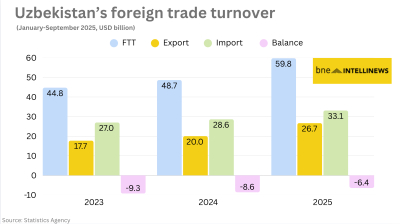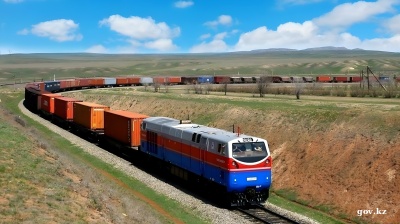Uzbekistan’s President Shavkat Mirziyoyev enters the fourth year of his “post-Karimov” bid to throw open the doors of his country to investors from near and far having accelerated efforts across 2019.
In fact, such was the pace of work focused on trade, investment and economic reform that in September foreign investors at an international conference in Tashkent heard stories of officials working 15-hour days with no weekends. The hard-pressed public servants became a big talking point after one dutiful official, who was seen scurrying about at speed at the gathering, collapsed. Mirziyoyev, said to put in long hours himself, on hearing of the spreading fatigue reportedly explicitly ordered officials to leave their offices at 5pm on Saturdays and spend Sundays with their families.

Main man Mirziyoyev.
Not that the hard work has not paid off in many ways. The year closed with The Economist picking Uzbekistan as its “Country of the year”. “The winner is a country Herman Cain, an American presidential candidate, once dismissed as ‘Ubeki-beki-beki-stan-stan’. Three years ago Uzbekistan was an old-fashioned post-Soviet dictatorship, a closed society run with exceptional brutality and incompetence. Its regime allegedly boiled dissidents alive, and certainly forced legions of men, women and children to toil in the cotton fields at harvest time,” the publication wrote in explaining its choice of country for its award.
It added: “When Islam Karimov, the despot for 27 years, died in 2016, he was succeeded by his prime minister, Shavkat Mirziyoyev. At first, little changed. But after dumping the head of the security services in 2018, Mr Mirziyoyev began reforms that have accelerated over the past year. His government has largely ended forced labour. Its most notorious prison camp has been closed. Foreign journalists are let in. Bureaucrats are banned from calling on small businesses, which they previously did constantly, to bully them for bribes. More border crossings have opened, helping unite families divided by Central Asia’s crazy quilt of frontiers. Foreign technocrats have been invited to help overhaul the state-stifled economy.”
Nevertheless, it should be noted that the new economic freedoms have not been matched in intensity by the introduction of fresh social and political freedoms, despite some significant progress in those spheres. Uzbekistan has certainly not entirely shed all the practices of a tightly controlled state. In December, a source close to the Uzbek government told RFE/RL that Uzbekistan was planning to toughen up punishments for people using the internet to organise or call for unsanctioned rallies. A person convicted of using media outlets, social networks, or other internet tools to organise or call for unsanctioned rallies, gatherings or mass demonstrations could face up to 10 years in prison, according to draft legislation.
Also not particularly encouraging were the first parliamentary elections under Mirziyoyev, held on December 22. All five parties that took part declared their backing for the president. With voter turnout officially at more than 70%, the Liberal Democratic Party of Uzbekistan (LDPU) won 43 seats in the 150-seat Oliy Majlis, the lower house of parliament, followed by Milli Tiklanish (National Revival) with 35 seats and the Adolat (Justice) Social Democratic Party with 21 seats.
Organisation for Security and Cooperation in Europe (OSCE) observers said the vote was marred by “serious irregularities”, while acknowledging there was “greater tolerance of independent voices” compared to previous polls. “The elections took place under clearly improved legislation and greater tolerance of independent voices but did not yet demonstrate genuine and full respect for election-day procedures,” George Tsereteli, president of the OSCE Parliamentary Assembly, said in Tashkent on December 23.
“The contested parties presented their political platforms and the media hosted debates and for the first time many of them were held live. However, the debate rules are still quite restrictive and the range of political options remains limited,” Tsereteli added.

| Uzbekistan leading indicators | ||||||
|
Markets
|
Actual | Q1 | Q2 | Q3 | Q4 | 2020 |
| Currency | 9502.89 | 9552 | 9604 | 9658 | 9711 | 9818 |
|
Overview
|
Actual | Q1 | Q2 | Q3 | Q4 | 2020 |
| GDP Annual Growth Rate (%) | 5.8 | 5.2 | 5.3 | 5.5 | 5.4 | 5.4 |
| Unemployment Rate (%) | 6.9 | 6.5 | 6.5 | 6.5 | 6.5 | 6.5 |
| Inflation Rate (%) | 14.3 | 13 | 13 | 13 | 13 | 10 |
| Interest Rate (%) | 16 | 16 | 15 | 15 | 14 | 14 |
| Balance of Trade (USD Million) | -4291.7 | 1870 | 1870 | 1870 | 1800 | 1800 |
| Current Account (USD Million) | -2769 | -360 | -360 | -360 | -360 | -360 |
| Current Account to GDP (%) | -7 | -6.3 | -6.3 | -6.3 | -6.3 | -2.9 |
| Government Debt to GDP (%) | 23.6 | 22.4 | 22.4 | 22.4 | 22.4 | 24 |
| Government Budget (% of GDP) | 0.5 | -1.7 | -1.7 | -1.7 | -1.7 | -1.7 |
| Corporate Tax Rate (%) | 7.5 | 7.5 | 7.5 | 7.5 | 7.5 | 7.5 |
| Personal Income Tax Rate (%) | 23 | 23 | 23 | 23 | 23 | 23 |
| source: Trading Economics | ||||||
Most populous ‘Stan’
Uzbekistan, the most populous of the five ‘Stans’ and the only one of them that has a border with all of the others, won’t, under Mirziyoyev, rest until investors are talking about it at least in the same breath as largest Central Asian economy Kazakhstan (the International Monetary Fund said in November that Uzbekistan’s ongoing drive to open up to foreign investment would spur a “healthy rivalry” in Central Asia that will potentially also boost the Kazakh economy). The nation’s fast-growing population, currently numbering around 32.8mn, will overtake Poland’s 38.4mn inhabitants not too long from now and it is the natural production and distribution base for the region.
As well as the big moves, plenty of imaginative small moves are being tried to move things along—in an effort to provide a social security net last year the president ordered the banks to make cheap “rabbit loans” available to the population—literally credits that enable people to buy rabbits cheaply. The idea was to provide a source of protein for poorer people and a way to earn some extra cash from selling the meat and fur. However, the scheme was a flop. The banks reported that “bunny NPLs” stood at 100% so the scheme was dropped. The low pay is an issue in Uzbekistan and it will take years for the economy to revalue to even regional and CIS levels. In the meantime, just under a million Uzbeks travel to Russia every year for work—the Uzbeks make up the largest ethnic group migrating to Russia. The wage levels they obtain are 10 times higher than what’s on offer back home. For investors, Uzbekistan is right back on the map.
For investors, Uzbekistan is right back on the map.
The investment landscape, meanwhile, is growing that much quicker. How times have changed. In November, Turkish investors Vahit, Fikret and Resat Gunes won around $40mn in compensation from Uzbekistan in a Washington arbitration after alleging that in 2011 authorities in the country imprisoned them for months before seizing a shopping centre the brothers had acquired in Tashkent. But such stories do little to discourage investors caught up in the excitement of the Mirziyoyev reforms.
Legal landscape
However, perhaps conscious of the need to reassure international investors, Mirziyoyev’s government has proposed reforms aimed at internationalising Uzbekistan’s legal landscape. The reforms envisage the creation of special legal regimes in free economic zones (FEZs) and encourage the use of arbitration instead of state courts. If successful, the reforms will allow international investors unfamiliar with Uzbekistan’s legal system to use alternatives in their business relationships. Uzbekistan now boasts more than 20 FEZs. Investors in these zones enjoy tax and customs exemptions, among other things. However, the Navoi FEZ stands out for two reasons. First, a presidential decree in May expanded the FEZ to cover the entire Navoi region, one of Uzbekistan’s largest provinces. Second, the government announced in July that it intends to apply English law in the Navoi FEZ.
Throughout the year, the liberalisation announcements kept coming thick and fast. In mid-December, Uzbekistan said it was planning on cancelling registration requirements for foreign visitors staying no more than 30 days in the country. The practice is set to come into force in July. In August, the Times of Central Asia reported that the government had tasked the Cabinet of Ministers, Ministry of Economy and Industry and the State Assets Management Agency with setting up small industrial zones (SIZ) “on the basis of unused facilities of large enterprises”, and to introduce procedures covering 65% of water, gas and electric utilities costs for these zones with national budget resources.
As you might expect, Uzbekistan in such a relatively short time since the reforms began has not yet overcome all the scepticism. In October, Eric Hontz, senior program officer Europe and Eurasia at the Center for International Private Enterprise (CIPE) in Tashkent, acknowledged that the changes were “palpable”—“There are no more questionable currency checks at the border, investment in real assets is increasing, and more investors are exploring the market. The government seems to have successfully completed some of the reforms that were low hanging fruit with wide buy-in from all sectors of the Uzbek community—but he cautioned that “This ‘easy’ reform period is now coming to an end. Now the real tests will begin. As one astute observer noted in a recent meeting in Tashkent: ‘[The government] want to change everything without changing anything.’”
WTO accession planned
In July last year, the permanent representative of Uzbekistan to the UN Office and other international organisations in Geneva, Ulugbek Lapasov, met with World Trade Organization (WTO) director-general Roberto Azevedo. The event marked the official start of Uzbekistan’s negotiation process for ascension into the WTO.
The same month, New York hosted “Opportunities in the capital markets of Uzbekistan”, an investment forum organised by the Uzbek Capital Market Development Agency and the Embassy of Uzbekistan. The event was attended by more than 140 participants, including representatives of the largest American portfolio investors, leading investment and management companies, including Citibank, MUFG, Franklin Templeton, and Dentons. Uzbek officials presented their reform agenda to some of the biggest names on Wall Street in a private Manhattan club.
In March, Uzbekistan’s profile in the US got a boost when Washington lifted its market ban on Uzbek cotton and products made with Uzbek cotton imposed due to concerns over child labour. The ban was imposed in 2010. The US Labor Department, Department of Homeland Security and State Department, following a review, said they had " determined that the use of forced child labor in the cotton harvest in Uzbekistan has been significantly reduced to isolated incidents".
Another image boost from the US came in June when Washington removed Uzbekistan from a list of nations with the worst religious tolerance for the first time in over a decade. The country registered a church for the first time in eight years in 2018.
In terms of regional profiling and integration, Uzbekistan in October officially joined the Cooperation Council of Turkic Speaking States, also known as the Turkic Council, during a two-day summit of the council’s member states in Azerbaijan’s capital Baku. Looking East, Mirziyoyev last April attended China’s latest Belt and Road Initiative summit as the Uzbeks look to capitalise on the mammoth project’s ambitions in rolling out modern infrastructure to drive up international trade, particularly where Europe-bound Chinese exports are concerned.

Leap in FDI
According to government figures, FDI in Uzbekistan has grown from $1.9bn in 2015 to an anticipated $7bn in 2019— in citing the figures in an interview with bne IntelliNews in November, Deputy Minister for Investment and Foreign Trade Laziz Kudratov stressed they were based on funds injected into the economy not mere project announcements. But there is much more still to do, as the authorities are aiming to further boost FDI to as much as $10.3bn by 2022.
Uzbekistan has some $20bn in hard currency reserves, three-quarters of it in solid gold, but over-dependence on the performance of the Russian economy does not sit well with officials who must defend the local currency, the Uzbek sum (UZS). In late August, the sum, along with the Kazakh tenge and Tajik somoni, was in the headlines after hitting new lows against the dollar. The latest stumble on the slippery slope meant the Uzbek currency had depreciated by 12.38% to UZS9,373.9 against the dollar since the start of this year. By the end of January 2, it had weakened further to UZS9,516.0.
September saw the government publish a draft decree that envisages the gradual transfer of monetary policy towards an inflation targeting regime with a permanent inflation target of 5% starting from 2023. The motivation behind the decree stems from ongoing pressure to curb the country's double-digit inflation, which has persisted amid the structural reforms, including the liberalisation of regulated prices and tax reforms.
Annual consumer price inflation registered at 13.6% in June. Uzbekistan’s central bank has since September 2018 kept its refinancing rate unchanged at 16% amid the inflation risk. In late November, central bank governor Mamarizo Nurmuratov said the central bank may consider cutting its policy rate within the next six months given the plan to switch to inflation targeting.
Uzbekistan’s GDP growth is expected to remain at around 5.6% in 2019 and 2020 before rising to 6% in 2021 as market reforms “open new sources of export-led growth, address production bottlenecks, and ease regulatory constraints”, according to the World Bank’s Europe and Central Asia Economic Update for autumn 2019, released on October 9.
In September, the Asian Development Bank (ADB) released an Asian Development Outlook 2019 (ADO 2019) update in which it raised its growth forecast substantially for Uzbekistan to 5.8% in 2019 from the previous expectation of 5.2% and to 6% in 2020 from the 5.5% foreseen in the previous ADO.
“The government reported growth rising from 5.1% in the first half of 2018 to 5.8% in the same period of 2019. Industry accelerated from 6.1% to 6.9%, with manufacturing higher by 7.8% and mining and quarrying by 4.7%. Growth in services picked up from 4.4% to 5.1% with gains of 3.8% in trade and 4.3% in transport and storage,” the update summarised.
It added: “On the demand side, investment was the key driver, off-setting lower net exports. Growth in gross capital formation soared from 13.4% in the first half of 2018 to 58.9% a year later on rapid credit expansion, primarily for industrial modernization and infrastructure development, and as foreign investment and loans rose from $2.2 billion in the year-earlier period to $3.8 billion, mainly for energy, mining, and manufacturing.”
IPO and SPO shortlisting
Scott Osheroff, CIO of the Asia Frontier Capital (AFC) Uzbekistan Fund, in December wrote a commentary for bne IntelliNews in which he described how Uzbekistan’s Capital Markets Development Agency (CMDA) has announced it will be short-listing 20 companies for IPO/SPO through the Tashkent Stock Exchange, with the official list to be published by February 2020.
He noted: “Privatising millions of dollars of state shares at once through the stock exchange would likely be ineffective at present as local investors are active, but not active enough to absorb tens of millions of dollars in new shares, while foreign institutional investors are only just beginning to enter the market, helping to increase demand for shares. A slow but steady privatisation of companies is better as it gives a broad base of local investors the opportunity to understand the value in some of these privatisations and also prevents single investors from gaining control of state assets, often at quite attractive prices.”
In a bid to increase liquidity on the Tashkent Stock Exchange, the CMDA says it is targeting not less than five IPOs in 2020. It will also lift an arbitrary cap on SPOs/IPOs where previously each investor was able to subscribe for a maximum 0.05% of the issue. Going forward, the CMDA appears to be targeting a cap of 3% per institutional investor which should help to ensure future privatisations are successful, according to Osheroff.
The current market capitalisation of the Tashkent Stock Exchange is a mere $4.8bn, or approximately 9.6% of GDP, an extremely low number relative to other markets such as Singapore, Vietnam and Russia whose market capitalization to GDP are 144%, 76% and 35% respectively.
Capital markets strategy
The CMDA said in November it was drawing up a five-year capital markets development strategy to run through to 2025. In total it has plans to fully or partially privatise 240 companies, with the aim of reducing the number of state owned enterprises by 50%. Identified IPO or SPO candidates include banks Aloqabank and SQB, the Jizzak Plastmassa plastics factory and the Uzbek Commodity Exchange.
While the government plans to hold on to stakes in strategically important companies such as Uzbekistan Airways, Uzbekneftegaz, Navoi Mining Complex and Uzbekistan Railways, at least part of each company will be put up for sale. The authorities are looking for strategic investors for other assets such as some of Uzbekistan’s major chemical plants.
In July, it was announced that Uzbekistan’s closed-end fund Oltin was set to become the first internationally listed security to provide investors with exposure to the Central Asian nation. The fund was later listed on the Specialist Fund Segment of the Main Market of the London Stock Exchange (LSE). The investment manager for the initial public offering (IPO) is Sturgeon Capital and the placing agent is Kazakh investment bank Visor Capital. Oltin was to be one of the only accessible securities offering exposure to Uzbekistan apart from the Uzbek debut sovereign eurobond, worth $1bn, issued in February.
Eurobonds from banks
In addition to state privatisations, several banks are expected to issue eurobonds, with O'zsanoatqurilish Bank (TSE:SQBN) having been a first mover, issuing a $300mn 5-year eurobond on November 25. The bond was priced with a YTM of 5.75% (initial expectations were for 6.5%) and was 4x oversubscribed. SQBN’s credit profile is rated as BB- with a Stable outlook by S&P.
In late November, majority-state-owned Uzpromstroybank, also known as Uzbek Industrial and Construction Bank (UICB), said it had collected over $800mn of orders for its five-year dollar bond. It marked the bank’s first international placement—the international bond was placed on the London Stock Exchange (LSE). In November, Fitch Ratings assigned the planned senior unsecured eurobond issue an expected long-term rating of 'BB-(EXP)'.
December saw President Mirziyoyev decree the transformation of the National Bank of Uzbekistan for Foreign Economic Affairs (NBU) into a “joint-stock company” from a “unitary enterprise”. The reformed bank’s non-core assets were to be partly handed over to the State Assets Management Agency—the other non-core assets will be sold. The new NBU would reportedly act as the successor of rights, obligations and agreements, including international treaties for the old NBU.
Uzbekistan’s banks are, amid the sun of reform, seen as having money, especially since the government’s eurobond debut. But, as Eugene Chausovsky, senior Eurasia analyst with US think tank Stratfor pointed out in a podcast with bne IntelliNews, what Uzbekistan desperately lacks is qualified and experienced people to invest it. The government has distributed about two thirds of the funds raised to the state-owned banks, each of which has been tasked with a different job to invest into growth-boosting sectors or infrastructure projects as banks have some of the few business savvy Uzbeks able to manage these sorts of projects. The largesse has created a distortion in the financial sector as state banks with access to state funds can lend at much lower rates—typically 14-15% pa—than the commercial bank rate on loans which is on the order of 25% pa, according to business people on the ground.
State banks dominate
The bulk of the country’s banking business is in the hands of the three leading state-owned banks, the NBU, with 27.4% of the sector assets, Asaka bank (14.1%), and Industrial and Construction Bank (13.4%) as of the third quarter of 2019. Altogether there are 13 state-owned banks on the market, or about a third of the total, but between them they control half (54.9%) of the sector’s assets. The remaining 17 privately owned market participants accounted for only 13.9% of total assets as of September and Uzbek companies and individuals dominated their ownership structure.
In August, Moody’s ratings agency predicted that in the next five years Kazakhstan, Kyrgyzstan, Tajikistan and Uzbekistan are set to see a “substantial” expansion of Islamic banking from a very low base thanks to government initiatives aimed at nurturing the sector. “One reason they are keen on expanding Islamic finance is to meet the cultural and religious needs of their Muslim populations. Another reason is that they see the development of Islamic finance as a way to foster investment ties with fast-growing economies in the Gulf and Asia that have large Muslim populations with large pools of capital,” said AVP-analyst at Moody’s Svetlana Pavlova.
Sovereign bond heavily oversubscribed
When Uzbekistan pushed ahead with its international bond market debut, it found its sovereign eurobond heavily oversubscribed. Final books for the billion-dollar issue stood at $3.8bn with around 150 institutional investor orders. Uzbekistan is now considering fundraising plans for the coming years which could include issuing a local-currency eurobond, top finance ministry officials in Tashkent said in November. At a briefing with foreign journalists in the capital, Deputy Prime Minister and Finance Minister Jamshid Kuchkarov said that Uzbekistan might go ahead with another eurobond issue as soon as next year, noting the need for funding for healthcare, infrastructure and water supply projects.
Uzbekistan is a youthful country—at least by Western standards, with a reported 60% of the population under the age of 30—and in November an UzInvest Forum in London heard that the younger generations in the country are moving into digital technology with some gusto. Banking is one area where the digital revolution is, however, yet to get going. "Investment in technology has the ability to rapidly alter Uzbekistan's banking networks and the financial market in the country, long one of the most underbanked in the former Soviet space. However, this will have to be root-and-branch, from the central bank investing in new clearing systems in line with international standards to investment in new technologies such as mobile phone-based banks,” Maximilian Hess, head of political risk at AKE International and fellow at the Foreign Policy Research Institute, said at the event.
New era in retail
Retail in Uzbekistan is entering into a new era of expansion and competition. Majid Al Futtaim (MAF), a major shopping mall owner across the Middle East, Africa and Asia, will, for instance, open the first Carrefour stores in Uzbekistan. The announcement of that move came after Majid Al Futtaim signed an agreement with local retail and real estate group AKFA. The development will mark the first entry of an international grocery retailer into Uzbekistan. Seven stores, both supermarkets and hypermarkets, are set to open over the next two years.
 Hillary Clinton sits behind the wheel of a Chevrolet Spark during her 2011 visit as US secretary of state to the Tashkent plant of General Motors, now a fully state-controlled enterprise named UZAUTO Motors.
Hillary Clinton sits behind the wheel of a Chevrolet Spark during her 2011 visit as US secretary of state to the Tashkent plant of General Motors, now a fully state-controlled enterprise named UZAUTO Motors.
There’s also a new hum in the domestic auto industry. Uzbekistan produced over 186,431 passenger vehicles in the first nine months of 2019, up by 40.4% compared to the same period of 2018, according to official data.
Uzbek state-run car producer GM Uzbekistan was last year renamed UZAUTO Motors, after the US company completed its withdrawal from the country. GM Uzbekistan was the successor of the UzDaewoo joint venture. The Mirziyoyev administration has taken full control of the company after buying out the last of the General Motors-owned 25% stake.
In gold, Uzbekistan’s exports officially rose 2.6-fold in annual terms in January-September and amounted to $3.98bn. Mirziyoyev signed a decree in January last year according to which the government was set to begin publishing gold mining statistics to remove the shroud of secrecy around the country's gold mining and exports. Gold made up 29.1% of Uzbekistan’s total exports in the seven-month period. Approximately, 86% of gold in the country is produced by two Uzbek miners, Navoi Mining and Metallurgical Company (NMMC) and Almalyk Mining and Metallurgical Company (AMMC).
The government has been reorganising the NMMC into a joint stock company away from state-ownership with the company’s management to be transferred to private entities “on a competitive basis”.
Plenty of action in energy
There’s also plenty of action in the Uzbek energy industry. The Central Asia Regional Economic Cooperation (CAREC) Energy Investment Forum in September saw Uzbekistan conclude several agreements with partners including Afghanistan, US companies and Saudi Arabia. They included a 10-year “take-or-pay” contract on the supply of electricity from Uzbekistan to Afghanistan via the Surkhan-Puli-Khumri power transmission line.
Russia’s Rosatom said in September it was close to signing a commercial contract to build two nuclear reactors in Uzbekistan. In late 2018, Uzbek Prime Minister Abdulla Aripov and Russian counterpart Dmitry Medvedev signed an agreement on the construction of a two-block nuclear power plant in Uzbekistan with a capacity of 1,200 MW per block in partnership with Rosatom. The agreement was a precursor to eventually signing a commercial contract that specifies the price, construction timing and other key points.
Looking to build up use of plentiful Uzbek gas feedstock for chemicals and petrochemicals, US-based Air Products and Chemicals has agreed on a roadmap with state-run oil and gas company Uzbekneftegaz. The roadmap outlines the American company’s proposed participation in a synthetic liquid fuel production project based on purified methane from the Shurtan Gas Processing Plant, which is a gas-to-liquids plant. It also outlines plans for the Chemical Construction Project in Yangiyer, set to be carried out jointly with state-run chemicals company Uzkimyosanoat to produce ammonia and urea.
In all, Uzbekistan plans to invest $12.1bn in developing its aging petrochemical industry over a 10-year period. Its strategy includes selling off government stakes in a number of enterprises, according to a presidential decree.
Textiles to break $2bn threshold
Exports of Uzbekistan’s textiles grew from under $1bn in value in 2017 to $1.7bn in 2018. They were expected to hit around $3.5bn within the next two years. The value of Uzbek textile exports should reach $2bn this year, chairman of the Uzbek Textile Industry Association Ilhom Haydarov said before the opening of the Global Textile Days 2019 forum in Tashkent in September.
In agriculture, the government intends to switch the country’s products to market pricing. The move, including the cotton and grain sectors, will shift pricing away from government-set pricing that has been the dominant model in the country for years, according to the draft law on the Strategy for the Development of Agriculture for 2020-2030. Agriculture accounts for 32% of Uzbekistan’s economy and stands as a leading source of employment in the country. Uzbekistan exported agricultural products worth $2.3bn in 2018 - it aims to raise this figure to $20bn by 2030.
Finally, anyone mulling a trip to Uzbekistan may this year find themselves regularly encouraged on social media. Uzbekistan has turned to nearly 100 international social-media influencers to promote tourism in the country by using creative photos and videos featuring ancient cities, such as Bukhara and Samarkand.
Features
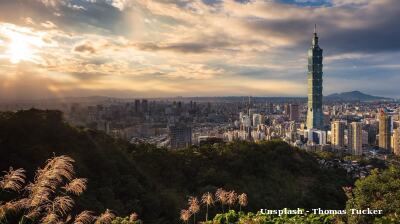
US denies negotiating with China over Taiwan, as Beijing presses for reunification
Marco Rubio, the US Secretary of State, told reporters that the administration of Donald Trump is not contemplating any agreement that would compromise Taiwan’s status.
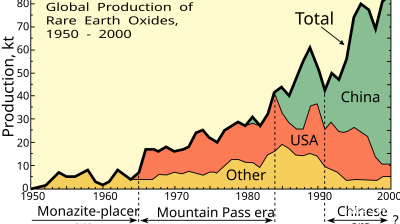
Asian economies weigh their options amid fears of over-reliance on Chinese rare-earths
Just how control over these critical minerals plays out will be a long fought battle lasting decades, and one that will increasingly define Asia’s industrial future.
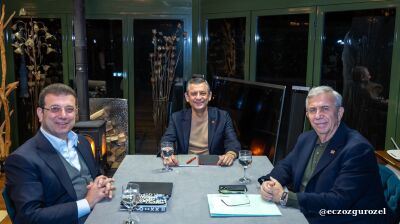
BEYOND THE BOSPORUS: Espionage claims thrown at Imamoglu mean relief at dismissal of CHP court case is short-lived
Wife of Erdogan opponent mocks regime, saying it is also alleged that her husband “set Rome on fire”. Demands investigation.
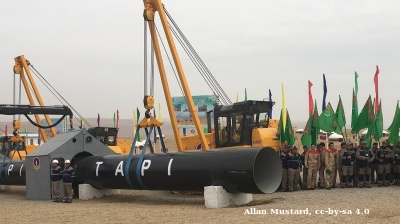
Turkmenistan’s TAPI gas pipeline takes off
Turkmenistan's 1,800km TAPI gas pipeline breaks ground after 30 years with first 14km completed into Afghanistan, aiming to deliver 33bcm annually to Pakistan and India by 2027 despite geopolitical hurdles.

_Cropped.jpg)
